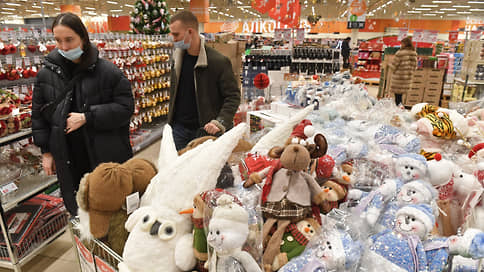Households in Russia did not spend money on the New Year
[ad_1]

Data on household purchases using Sberbank cards and the weekly spending index of the Romir panel, as in the first ten days of December 2022, record a noticeable deterioration in consumer activity of citizens in the last full week of the month. According to Sberindex, the nominal spending of Russians on goods and services in annual terms increased by 4.1% (the lowest since the beginning of October) against 4.1% and 4.9% in the previous two weeks (see chart). On the eve of the holidays, the annual dynamics of food spending improved (9.2% versus 7.3% in the second week of December), while spending on non-food products is falling more and more — by 3.4% against a decline of 2.2% in the previous two weeks , which is explained by a decrease in their availability: in an annual comparison, spending on furniture decreased by 35.5%, on clothes – by 28.3%, on stationery – by 24%, on household appliances – by 22.2%. Demand for medicines remains stable, while the dynamics of consumption of services that supported demand in the summer is deteriorating. The nominal value of the index of weekly expenses on December 19–25 did not actually change in annual terms (growth by 0.1%).
Citizens in the penultimate week of December spent in real terms 8-12% less than a year ago. At the same time, the average check, according to Romir, decreased by more than 13% (minus 1.2% in nominal value). This is close to Infoline’s expectations that pre-holiday expenses will decrease by 15% year-on-year (see Kommersant dated December 29). According to the forecasts of Tinkoff Kassa, on the day of peak demand before the New Year – December 30 – the spending of Russians may decrease by 24% – to a minimum over the past five years.
“The improvement in annual dynamics in November is primarily the base effect (lockdown in early November 2021),” their colleagues from the MMI Telegram channel are convinced. However, a seasonally adjusted rebound in demand in November was also recorded compared to October. “Demand won back post-mobilization weakness in November,” analysts of the Solid Numbers Telegram channel also state. Igor Polyakov from TsMASF, in turn, believed that the surge in demand in November, which was realized primarily in non-food products, was partly due to the return of some people who left the country in September (see Kommersant on December 29). However, in November, demand did not return to the pre-mobilization level, according to MMI, and its weak recovery in November gave way to a decline in December.
[ad_2]
Source link






